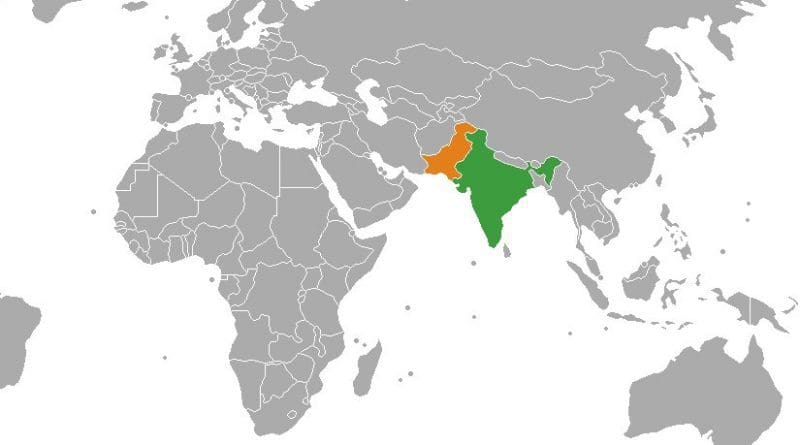Pakistan’s Proposal For Strategic Restraint Regime: Commitment Towards Non-Proliferation – OpEd
By Sher Bano*
Strategic Restraint Regime (SSR) was first offered by Pakistan to India in the year 1998. It consisted of three significant elements; reduction in armed forces, stable deterrence and peacefully resolving all the lingering disputes. It was proposed in response to Cold Start Doctrine as a result of which India planned combined military strikes inside Pakistan in order to prevent Pakistan from using strategic weapons. While speaking at the UN, Pakistan’s permanent representative said that Pakistan’s offer for Strategic Restraint Regime still remains on the table in order to ensure peace and stability in the region. In light of the increasing threat of India’s pre-emptive strike, SSR would curb the arms build-up highlighting Pakistan’s commitment towards non-proliferation in South Asia.
The Strategic Restraint Regime would reduce the dependence of India and Pakistan on external powers by offering a pathway that excludes the great power factor from security calculus. There are three interlocking elements of SSR such as missile and nuclear restraint, conventional balance, and conflict resolution needs to be adopted collectively because of their interlocking nature. SSR consists of measures for conventional balance and nuclear restraint, conflict resolution through a result-oriented dialogue, non-deployment or acquisition of BMDs, maintaining nuclear weapons on low alert status, avoiding any kind of missile, nuclear or conventional arms race, and nuclear test moratoriums. However, despite Pakistan’s continuous efforts, India has been reluctant in engaging in such issues due to its quest to attain global power status which it will never be able to attain. Unless the regional disputes are resolved among both states, India’s global ambitions will always remain a challenge.
The most pertinent of all is the unresolved Kashmir issue among both states. The durable peace in the region is unattainable unless the Kashmir issue finds a plausible solution. Similarly, geographic instability and vertical nuclear proliferation are the results of a conventional imbalance in the region. It is quite evident from history that arms control measures have always helped to bridge the trust deficit and reduce the tension among the rival states. The Strategic Restraint Regime offered by Pakistan covers all such contours that are necessary for stability and holistic peace in the region. Pakistan while reiterating its call for Strategic Restraint Regime proposed that it would be mutually beneficial for both states. It would also provide both states with viable options to deal with the emerging technologies that have added new layers of complexities to the stability of the region. Moreover, it would also help to address the disruptive technologies such as BMDs “Ballistic Missile Defense Systems”, hypersonic glide vehicles, Agni-V, and curb the nuclearization of the Indian Ocean. All these emerging technologies would disrupt the deterrence equilibrium in the region if necessary measures are not taken for arms control and disarmament.
Pakistan by introducing SSR and by offering various arms control measures has always been open for dialogue and confidence-building measures. Pakistan has always adhered to unilateral restraint even in terms of growing nuclear asymmetries in the region. It was India’s development of BMD that led Pakistan to develop MIRV “Multiple Independent Reentry Vehicle”, furthermore it was the nuclearization of the Indian Ocean that forces Pakistan to develop SRBM. Various proposals were put forth by Pakistan in front of India such as the non-development of the BMD system which could have curtailed the development of MIRV and offered to declare the Indian Ocean a Nuclear Weapon Free Zone but all went in vain as India refused to engage in any of the among proposals. The Lack of cooperation and reciprocity has only increased the instability in the region.
In order to address the conventional and non-conventional asymmetries and to address the regional and global challenges, Strategic Restraint Regime offers a comprehensive and holistic approach towards nuclear disarmament. Pakistan has been arguing for a very long time that conventional asymmetries between both Pakistan and Indian armed forces are encouraging a nuclear arms race in the region that would lead to a huge conflict. The three-points formula offered by the Strategic Restraint Regime includes balance among the conventional forces, dispute resolution particularly the Kashmir conflict, and measures for missile and nuclear restraint that would result in long-lasting peace in the region. Pakistan has always reacted with restraint to Indian provocations and threats but it’s high time that both nations collectively agree on measures to stop vertical proliferation in the region.
*The writer is working as a Research Affiliate at the Strategic Vision Institute (SVI), a non-partisan think-tank based out of Islamabad, Pakistan.

